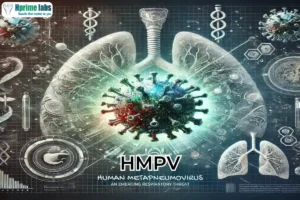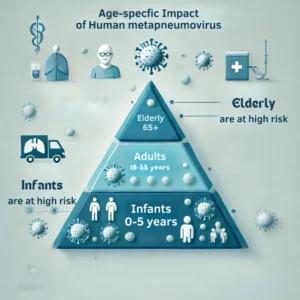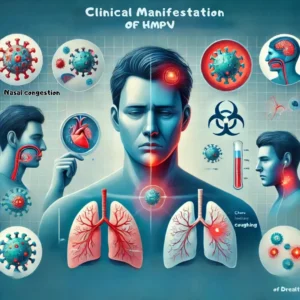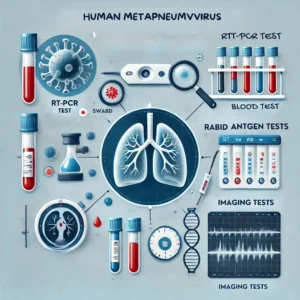HMPV (Human Metapneumovirus): A Comprehensive Guide to the Emerging Respiratory Threat

In recent years, the medical community has observed a significant increase in Human Metapneumovirus (HMPV) cases worldwide. As a leading pathology laboratory in Ghaziabad, hprime laboratories has been at the forefront of respiratory virus testing and diagnosis. This comprehensive guide will help you understand everything about HMPV, from its basic characteristics to the latest research developments.
Understanding HMPV: A Historical Perspective
Human Metapneumovirus was first identified in 2001 by researchers at the Erasmus Medical Center in Rotterdam, Netherlands. However, subsequent studies revealed that this virus had been circulating in human populations for at least 50 years prior to its discovery. Belonging to the Pneumoviridae family, HMPV shares many characteristics with its close relative, Respiratory Syncytial Virus (RSV).
Global Epidemiology and Seasonal Patterns
HMPV infections occur worldwide, with varying patterns
Temperate Regions
– Peak season: Late winter to early spring
– Secondary peak: Early autumn
– Lowest activity: Summer months
When Does HMPV Occur in India?
Unlike many other respiratory viruses that mainly appear in winter, HMPV in India follows a different pattern. Here’s what you need to know:
Winter: The Peak Season
HMPV cases typically surge during the winter months (December to February) in India because:
- Cold weather leads to more indoor gatherings
- Closed windows and doors mean less ventilation
- The virus survives longer in cool temperatures
- Our respiratory system becomes more sensitive in cold weather
Other Seasons
While HMPV can occur throughout the year:
- Cases are generally lower during summer months
- There might be some increases during seasonal changes
- Good ventilation and outdoor activities in non-winter months help reduce transmission
Age-Specific Impact

Research shows distinct patterns in how HMPV affects different age groups:
1. Infants and Young Children (0-5 years)
- Highest infection rates
- 5-20% of respiratory infections in this age group
- Nearly 100% exposure by age 5
2. School-Age Children (5-12 years)
- Lower severity but high transmission rates
- Often serve as vectors to family members
3. Adults (18-65 years)
- Generally milder symptoms
- Higher risk in healthcare workers
- Increased severity in those with comorbidities
4. Elderly (65+ years)
- Second highest risk group after infants
- Higher hospitalization rates
- Increased mortality risk
Detailed Clinical Manifestations

Understanding the signs and symptoms of HMPV infection.
Upper Respiratory Symptoms
1. Initial Symptoms (Days 1-3)
- Nasal congestion
- Rhinorrhea
- Sore throat
- Low-grade fever
2. Progressive Symptoms (Days 4-7)
- Persistent cough
- Hoarseness
- Headache
- Fatigue
Lower Respiratory Symptoms
1. Mild to Moderate Cases
- Wheezing
- Chest tightness
- Productive cough
- Shortness of breath
2. Severe Cases
- Bronchiolitis
- Pneumonia
- Respiratory distress
- Potential need for ventilation
How Does HMPV Spread and Make You Sick?
- Person to Person Contact:
- Through tiny droplets when someone coughs or sneezes
- By close contact with infected people (like hugging or shaking hands)
- By touching surfaces with the virus and then touching your face
- Environmental Spread:
- The virus can live on surfaces for up to 24 hours
- It spreads more easily in certain weather conditions
- Air quality can affect how easily the virus travels
How the Virus Affects Your Body
- How It Starts:
- The virus enters through your nose or mouth
- It attaches to cells in your breathing passages
- Your body notices the virus and starts fighting it
- What Happens Next:
- The virus damages cells in your airways
- Your body’s defense system causes inflammation
- You produce more mucus
- Your airways might become narrower, making it harder to breathe
How Do Doctors Test for HMPV?

- RT-PCR Test (Most Common)
- A nose or throat swab test
- Most accurate for detecting active HMPV infection
- Results in 4-6 hours
- Recommended when symptoms first appear
- Blood Tests (Serological Testing)
- IgG and IgM antibody tests
- Checks for antibodies against HMPV
- Usually used to check past infection
- Recommended when tracking recovery
- Rapid Antigen Tests
- Quick results (15-30 minutes)
- Less accurate than RT-PCR
- Useful for initial screening
- Imaging Tests ( If Needed )
- Chest X-rays
- CT scans for severe cases
Prevention and Control Measures
- Personal Hygiene
- Hand washing techniques
- Respiratory etiquette
- Personal protective equipment
- Surface disinfection
- Lifestyle Factors
- Adequate sleep
- Balanced nutrition
- Regular exercise
- Stress management
Conclusion
Understanding HMPV is crucial for both healthcare providers and the public. As cases continue to rise globally, staying informed about prevention, symptoms, and treatment options becomes increasingly important. Regular testing and early detection remain key strategies in managing this respiratory pathogen effectively.





Leave a Comment